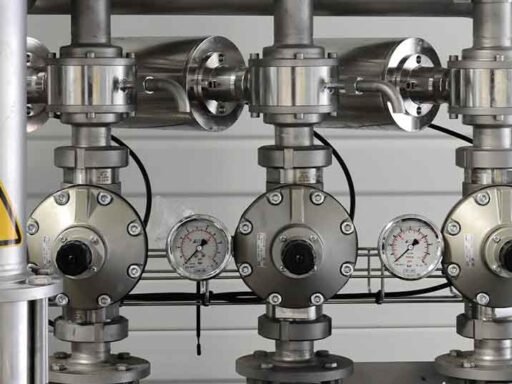In today’s security-conscious residential market, homeowners increasingly seek fencing solutions that deliver both privacy and substantive protection. For fencing contractors, distributors, and installers, understanding the multifaceted security benefits of privacy fence panels creates significant business opportunities while providing genuine value to clients concerned about property protection. This comprehensive analysis examines how privacy fencing delivers meaningful security enhancements, positioning fence professionals to effectively communicate these advantages during client consultations and project development.
As a leading manufacturer with over two decades of expertise in metal fencing and related architectural products, BarrierBoss has developed substantial insights into how different privacy fence configurations impact residential security. This technical guide explores these relationships, providing industry professionals with actionable knowledge to enhance client communications and project specifications.
The Evolving Home Security Landscape
Before examining specific privacy fence contributions to security, understanding the current residential security environment provides essential context:
Contemporary Security Challenges
Today’s homeowners face evolving security concerns requiring comprehensive approaches:
Increased Property Crime Sophistication: Modern property crime increasingly involves pre-selection based on vulnerability assessment rather than random opportunity. Privacy fencing eliminates the critical surveillance phase of this process by preventing external observation of security systems, access points, and valuable assets that might otherwise identify a property as a potential target.
Package Theft Prevalence: The dramatic increase in home deliveries has created corresponding growth in package theft from accessible porches and entryways. Privacy fence installations with secure gate systems create protected delivery areas that eliminate direct street access to these vulnerable positions.
Unauthorized Photography Concerns: Growing privacy concerns include unauthorized photography and digital documentation of private property and activities. Complete privacy fence systems prevent this intrusion while maintaining normal domestic activities without constant vigilance against observation.
Child Safety Complexities: For families, security extends beyond crime prevention to child safety considerations, including both preventing unauthorized access to children and ensuring children remain within protected areas. Privacy fence installations address both concerns simultaneously through controlled access and defined secure boundaries.
Security System Integration Requirements
Effective residential security requires coordinated protection components:
Layered Defense Necessity: Security professionals recognize that effective protection requires multiple security layers creating cumulative deterrence rather than relying on single-point protection. Privacy fencing establishes the critical first perimeter layer upon which other security elements build, creating defense-in-depth rather than reliance on reactive interior measures alone.
Passive/Active Protection Balance: Complete security systems require both passive elements (physical barriers) and active components (electronic monitoring). Privacy fencing provides essential passive protection that functions continually without power requirements, technical failures, or monitoring gaps that might compromise active systems.
Psychological Deterrence Factors: Criminal behavior analysis confirms that perceived difficulty significantly impacts target selection, with most opportunistic crime abandoned when encountering substantial initial barriers. Privacy fence installations create immediate psychological deterrence by establishing clear boundary definition and eliminating easy property assessment.
Disaster Security Considerations: Comprehensive security planning includes considerations beyond criminal threats, including emergency management during disasters or infrastructure disruptions. Privacy fence installations create defined safe zones during emergencies while restricting unauthorized access during periods of reduced official security presence.
Privacy Fence Security Components Analysis
The security contribution of privacy fencing derives from several key elements:
Visual Barrier Effectiveness
Privacy fence panels deliver their primary security function through visual obstruction:
Surveillance Prevention: The fundamental security advantage of quality privacy fencing comes from preventing property surveillance that typically precedes targeted intrusion. By eliminating the ability to observe entry points, security measures, and valuable assets, privacy fencing removes critical information required for planned intrusion.
Activity Pattern Concealment: Household routines revealing occupancy patterns (departure times, extended absences, etc.) remain invisible behind effective privacy fencing, preventing the schedule analysis that often precedes property crime. This temporal protection proves particularly valuable for properties with predictable vacancy periods.
Security Measure Confidentiality: While visible security measures may deter opportunistic crime, they simultaneously broadcast specific systems requiring circumvention to determined intruders. Privacy fence installations conceal specific security deployments, preventing counter-measure planning while maintaining deterrence through boundary definition.
Valuable Asset Concealment: Items attractive to opportunistic theft (recreational equipment, outdoor electronics, specialized landscaping materials) remain invisible from public observation behind privacy fencing, preventing the value identification that often triggers impulsive property crime.
Physical Barrier Functions
Beyond visual protection, privacy fence panels provide substantial physical security:
Access Limitation: Properly designed privacy fence installations eliminate multiple potential access routes, channeling all approach vectors through controlled entry points where additional security measures can be concentrated. This access consolidation simplifies monitoring while maximizing security resource effectiveness.
Climbing Deterrence: Quality privacy fence designs eliminate the footholds and gripping surfaces that facilitate climbing, particularly when compared to chain link or ornamental alternatives with inherent climbing supports. BarrierBoss metal privacy fence systems feature smooth surfaces and height configurations specifically engineered to maximize climbing difficulty.
Forced Entry Resistance: The solid construction of privacy fence panels distributes force across larger surface areas compared to open designs, requiring substantially greater effort for physical breach. This resistance significantly increases both the time and noise associated with forced entry attempts, enhancing detection probability.
Debris Impact Protection: Beyond human threats, privacy fencing provides protection against wind-blown debris impact during severe weather, preventing both property damage and potential injury from unsecured objects in surrounding areas. This protection becomes increasingly valuable as extreme weather events intensify in many regions.
Security Feature Enhancement
Privacy fence systems complement and enhance other security elements:
Camera Effectiveness Improvement: Security cameras perform optimally with controlled background and consistent lighting. Privacy fencing eliminates variable background movements that trigger false alerts while providing consistent visual backgrounds that improve subject identification and recording quality.
Lighting Control Enhancement: Strategic security lighting integrated with privacy fencing creates controlled illumination zones without light pollution affecting interior spaces or neighboring properties. This directed illumination maximizes effectiveness while minimizing the nuisance factors that often lead to security lighting deactivation.
Audio Detection Optimization: The sound-reflective properties of solid privacy fence surfaces enhance audio detection systems by containing and reflecting sounds within the protected perimeter. This acoustic enhancement improves trigger reliability while reducing false activations from external urban noise sources.
Motion Detection Refinement: By eliminating extraneous movement from public spaces (pedestrians, vehicles, animals), privacy fencing reduces false triggers in motion detection systems while ensuring that detected movement represents actual security concerns requiring response.
Material Selection for Optimized Security Performance
Different privacy fence materials deliver varying security performance profiles:
Metal Privacy Fence Security Advantages
BarrierBoss metal privacy fence systems offer specific security benefits:
Breach Resistance Superiority: Compared to wood or vinyl alternatives, metal privacy fence panels provide substantially greater resistance to cutting, breaking, or physical manipulation. This material strength significantly increases breach difficulty while extending the time required for forced entry attempts.
Fire Resistance Benefits: Metal privacy fencing eliminates the vulnerability to intentional or accidental fire that affects combustible fencing materials. This resistance proves particularly valuable for properties in wildland-urban interface zones or areas with elevated arson risk profiles.
Maintenance Stability: Unlike wood privacy fencing that may develop security vulnerabilities through warping, splitting, or fastener failure over time, metal privacy fence systems maintain consistent security performance without degradation that might create unexpected access points or climbing opportunities.
Weather Impact Resilience: Severe weather events that might compromise wood or vinyl fence security through panel displacement or structural failure have minimal impact on properly installed metal privacy fence systems. This resilience ensures security continuity during extreme conditions when protection becomes particularly valuable.
Lifecycle Security Consistency: The exceptional durability of quality metal privacy fence systems ensures consistent security performance throughout decades of service without the progressive deterioration that affects alternative materials. This stability eliminates the security degradation that often occurs as wood fencing ages beyond its prime condition.
Wood Privacy Fence Security Considerations
Traditional wood privacy fencing presents specific security characteristics:
Modification Adaptability: Wood privacy fence systems allow relatively simple security enhancements through added hardware, extension elements, or reinforcement components addressing specific vulnerabilities or changing security requirements. This adaptability enables ongoing security optimization without complete system replacement.
Sound Attenuation Properties: The mass and composition of solid wood privacy fencing provide superior sound dampening compared to metal alternatives, reducing sound transmission that might otherwise reveal security-relevant activities within the protected perimeter. This acoustic privacy complements visual protection in comprehensive security planning.
Climbing Difficulty Variables: Depending on specific design, wood privacy fencing may provide either excellent climbing resistance (with flush boards and smooth surfaces) or potential vulnerabilities (with horizontal rails or textured surfaces providing foot and handholds). Contractors should recommend designs optimizing climb resistance for security-focused installations.
Force Distribution Characteristics: Solid wood panel designs distribute applied force across larger areas and multiple fasteners, requiring substantial effort for breach compared to focused force applications that might compromise alternative materials. This distribution creates effective delay factors during potential forced entry attempts.
Vinyl and Composite Security Profiles
Engineered privacy fence materials offer distinctive security characteristics:
Uniformity Advantages: Unlike natural materials with inherent variation, engineered privacy fence panels provide consistent performance without weak points from knots, grain variations, or density differences that might create security vulnerabilities in natural materials. This uniformity ensures reliable minimum security standards throughout the installation.
Noise Signature Benefits: Vinyl and composite materials typically generate distinctive noise when subjected to climbing or breach attempts, creating audible alert potential exceeding both wood and metal alternatives. This intrinsic alarm function provides additional deterrence and detection probability during unauthorized access attempts.
Weather Stability: Engineered materials maintain consistent dimensions and structural integrity despite moisture and temperature fluctuations that might affect natural materials. This stability ensures continuous security performance without the seasonal variations or progressive deterioration that often compromise wood fence security.
Fastener Retention: Quality vinyl and composite systems typically feature superior fastener retention compared to wood alternatives subject to fastener loosening through expansion/contraction cycles. This retention maintains structural integrity and security performance throughout the installation lifespan.
Installation Considerations for Maximum Security Effectiveness
Security performance depends significantly on proper installation techniques:
Perimeter Integrity Optimization
Complete protection requires attention to perimeter continuity:
Ground Gap Elimination: Security-focused privacy fence installations require minimal ground clearance without creating soil contact that accelerates deterioration. Recommended specifications maintain gaps under 4 inches to prevent breach attempts while elevating materials sufficiently to prevent premature failure through ground contact.
Corner Security Reinforcement: Corners represent potential vulnerability points in privacy fence installations due to changed structural dynamics and potential leverage opportunities. Security-optimized installations feature additional reinforcement at these locations through enhanced post foundations, supplemental bracing, or specialized corner assemblies.
Transition Point Protection: Interfaces between fencing and structures (buildings, gates, utility connections) require particular attention to maintain continuous protection without creating unintended access opportunities. Detailed connection specifications address these potential vulnerability points with appropriate overlaps and secure attachment methods.
Terrain Adaptation Methods: Properties with significant grade changes require specialized installation techniques maintaining security integrity throughout elevation transitions. These adaptations might include stepped panel installation, custom height panels, or supplemental barriers addressing potential crawl-under opportunities at grade transitions.
Gate Security Enhancement
Access points require particular security attention:
Hinge Protection Engineering: Security gate installations benefit from hinge-side protection preventing pin removal or disassembly from the unsecured side. These protective measures prevent a common defeat mechanism affecting standard gate installations with exposed hinge components.
Latch Security Optimization: Beyond basic function, security-focused gate latches should feature tamper-resistant designs, protected mounting hardware, and operation mechanisms inaccessible from the unsecured side. These enhanced components deliver security performance matching the surrounding fence system rather than creating vulnerability points.
Framework Reinforcement: Gates experience substantially greater stress than static fence sections, requiring enhanced framework to prevent sagging, misalignment, or deformation that might compromise security function. Recommended specifications typically increase gate frame dimensions by 25-50% compared to standard fence framework.
Automated System Protection: Electronic gate operation systems require specific protection measures securing control components, power supplies, and operation mechanisms against tampering or defeat attempts. These protections should include both physical shielding and appropriate electronic security measures.
Post Foundation Engineering
Long-term security performance depends fundamentally on appropriate foundation design:
Depth Optimization: Security-focused privacy fence installations benefit from post depths exceeding minimum standards, particularly for installations exceeding six feet in height. These enhanced foundations provide superior resistance to leveraging attempts that might compromise perimeter integrity through post displacement.
Diameter Specifications: Post hole diameter should create concrete encasement extending at least 2 inches beyond post dimensions in all directions, creating structural mass resistant to displacement forces while ensuring complete protection of embedded portions against ground contact deterioration.
Concrete Quality Factors: Foundation performance depends significantly on concrete quality, with recommended specifications including minimum 3000 PSI rating, appropriate water content for complete consolidation, and proper curing procedures ensuring maximum strength development before fence loading.
Reinforcement Considerations: High-security installations or challenging soil conditions may warrant additional foundation reinforcement through rebar integration, expanded diameter, or specialized anchoring systems addressing specific site requirements. These enhancements deliver long-term performance justifying their modest additional investment.
Case Studies: Privacy Fence Security Enhancement
Examining real-world implementations demonstrates tangible security benefits:
Suburban Property Transformation
A comprehensive privacy fence installation demonstrates measurable security improvement:
Project Overview: A suburban property experiencing repeated landscape theft and unauthorized photography implemented complete perimeter protection using BarrierBoss metal privacy fence panels with enhanced gate security and integrated lighting systems.
Security Enhancement Metrics:
- Complete elimination of unauthorized property entry previously occurring approximately twice monthly
- 100% reduction in landscape material theft previously averaging $200 monthly
- Elimination of drone-based photography attempts previously occurring weekly
- 30% reduction in homeowner insurance premiums following security inspection
Installation Specifications:
- 6.5-foot metal privacy fence panels with anti-climb top configuration
- Concrete post foundations extending 36 inches below grade with 12-inch diameter
- Double-authentication electronic gate access system with backup mechanical security
- Integrated low-voltage lighting with programmable operation and motion activation
Client Feedback: “Beyond the obvious security improvements, we’ve experienced unexpected benefits including noise reduction, enhanced outdoor usage comfort, and substantially reduced concern about property vulnerability during our frequent business travel.”
Urban Residence Security Integration
A city property demonstrates effective security system integration:
Project Overview: A downtown residential property with significant security concerns implemented a coordinated approach including BarrierBoss privacy fence panels with specialized security enhancements addressing specific urban threat profiles.
Security Enhancement Metrics:
- 90% reduction in security system false alarms after privacy fence installation eliminated street-level motion triggers
- Complete elimination of package theft previously occurring approximately twice monthly
- Three documented breach attempt abandonments identified through security camera footage
- Enhanced property marketability noted by real estate professionals during subsequent property valuation
Installation Specifications:
- 7-foot metal privacy fence with specialized anti-scaling design elements
- Integrated security camera mounting systems with concealed wiring pathways
- Custom access control gate with delivery management features
- Foundation security measures preventing under-fence access attempts
Client Feedback: “The privacy fence system transformed our security profile from reactive to preventative, eliminating the constant concern about property vulnerability that previously affected our quality of life. The investment delivered returns beyond financial considerations through genuine peace of mind.”
Communicating Security Benefits to Homeowners
Effectively conveying privacy fence security advantages enhances project development:
Consultative Needs Assessment
Effective security discussions begin with comprehensive requirement evaluation:
Threat Profile Analysis: Engage clients in structured discussion of specific security concerns, distinguishing between general anxieties and specific threats requiring targeted mitigation. This analysis enables appropriate system recommendations addressing actual rather than perceived vulnerabilities.
Property Vulnerability Evaluation: Offer professional assessment identifying specific property vulnerabilities that privacy fencing might address, providing concrete rather than abstract security discussions. This approach transforms vague security desires into actionable protection strategies directly addressable through appropriate fencing solutions.
Priority Determination Process: Help clients distinguish between critical security requirements and peripheral concerns, enabling focused investment in elements delivering maximum protection value. This prioritization ensures that primary threats receive appropriate attention rather than diluting resources across issues of varying significance.
Budget Alignment Strategies: Develop phased implementation recommendations aligning security priorities with available resources, potentially beginning with perimeter sections addressing highest vulnerability areas. This practical approach enables immediate action rather than postponement pending complete project funding.
Value Communication Approaches
Effectively articulating privacy fence value enhances client appreciation:
Security Layer Explanation: Help clients understand how privacy fencing establishes the critical first security layer upon which other protective measures build, creating comprehensive protection rather than isolated security elements. This integrated perspective positions fencing as fundamental infrastructure rather than optional enhancement.
Insurance Impact Information: Provide documentation regarding potential insurance premium reductions associated with qualified privacy fence installations meeting specific security standards. This economic benefit often offsets significant portions of installation investment through ongoing premium savings.
Property Value Enhancement: Share market data demonstrating how security-enhanced properties typically command premium pricing and reduced marketing periods when offered for sale. This investment perspective positions security fencing as property enhancement rather than mere expense.
Risk Mitigation Quantification: Where possible, quantify potential loss scenarios prevented through adequate perimeter security, including both direct material losses and indirect impacts like business interruption during property recovery or psychological effects following security breaches.
Technical Differentiation Guidance
Helping clients understand critical security differences enhances decision quality:
Material Performance Comparison: Provide objective comparison of different privacy fence materials regarding specific security characteristics including breach resistance, climbing difficulty, maintenance requirements, and lifecycle performance. This information helps clients make informed decisions aligned with their particular security priorities.
Design Element Education: Explain how specific design features enhance security performance, including top configurations preventing climbing, elimination of external horizontal rails that might facilitate scaling, and appropriate height selections addressing particular security threats. This education helps clients recognize security value beyond basic privacy functions.
Installation Quality Importance: Communicate how installation specifications directly impact security performance, particularly regarding post foundations, panel connections, and hardware selection. This understanding helps justify investment in appropriate installation quality rather than minimum-standard alternatives that might compromise security outcomes.
Integration Capability Evaluation: Demonstrate how different privacy fence systems accommodate security enhancements like lighting, electronic monitoring, and access control integration. This forward-looking perspective helps clients select systems supporting both current requirements and potential future security expansions.
Future Trends in Privacy Fence Security
Emerging developments will further enhance privacy fence security contributions:
Material and Design Evolution
Ongoing innovation continues advancing security performance:
Composite Security Materials: Advanced material development combining metal structural elements with alternative facing materials will deliver enhanced security performance while providing expanded aesthetic options addressing diverse architectural requirements. These hybrid approaches will offer unprecedented combinations of security, appearance, and longevity.
Modular Enhancement Systems: Emerging modular security additions will enable progressive enhancement of existing privacy fence installations, allowing security upgrades without complete system replacement. These adaptable components will extend privacy fence security relevance through changing threat environments.
Sensor Integration Engineering: Purpose-designed privacy fence systems incorporating concealed sensor technologies will deliver enhanced perimeter monitoring without visible security elements that might detract from residential aesthetics. These integrated approaches will eliminate the current necessity for visible security component attachment.
Environmental Adaptation Focus: Specialized privacy fence designs addressing specific regional threats (extreme weather, wildfire, flooding) while maintaining security performance will increase installation relevance across diverse environments. These application-specific systems will optimize both security and environmental resilience simultaneously.
Technology Integration Advancement
Electronic security integration will enhance privacy fence functionality:
Access Control Sophistication: Advanced gate automation systems with multi-factor authentication, temporary access provision, and activity logging will extend privacy fence security management capabilities. These intelligent systems will deliver commercial-grade security within residential aesthetic parameters.
Monitoring System Coordination: Purpose-designed privacy fence systems supporting distributed monitoring technologies will create comprehensive perimeter awareness without conventional security appearance. These integrated approaches will eliminate the cobbled appearance of aftermarket security additions while improving functional performance.
Energy Independence Development: Self-contained power systems incorporating solar generation, battery storage, and efficient consumption will enable advanced security functions without dependency on grid power or vulnerable external connections. This independence will ensure continuous protection during infrastructure disruptions affecting conventional security systems.
Artificial Intelligence Applications: Machine learning systems distinguishing between routine activity and security threats will dramatically reduce false alerts while increasing genuine threat recognition within privacy fence protected perimeters. These intelligent monitoring capabilities will transform security effectiveness without increasing management complexity.
Conclusion: Privacy Fence Panels as Essential Security Infrastructure
For fencing professionals serving security-conscious clients, positioning privacy fencing as fundamental security infrastructure rather than merely decorative boundary definition creates substantial value opportunities. By understanding and effectively communicating how privacy fence installations directly address contemporary security challenges, contractors transform standard product offerings into essential protection systems commanding appropriate investment.
The multifaceted security benefits of quality privacy fencing—visual protection, physical barrier functions, and security system enhancement—create compelling value propositions resonating with today’s security-aware homeowners. When these benefits align with appropriate material selection and installation specifications, the resulting systems deliver genuine protection justifying premium positioning and pricing.
At BarrierBoss, our commitment extends beyond manufacturing quality privacy fence products to supporting our contractor partners with the knowledge and resources needed to effectively implement complete security solutions. Our metal privacy fence systems deliver exceptional security performance while maintaining residential aesthetics appropriate for even the most discerning neighborhoods and homeowner associations.
For detailed specifications, security performance data, or project consultation regarding privacy fence security applications, contact the BarrierBoss team today. Together, we’ll continue developing solutions that truly keep what matters in and what doesn’t matter out—the fundamental purpose of any effective security boundary.






